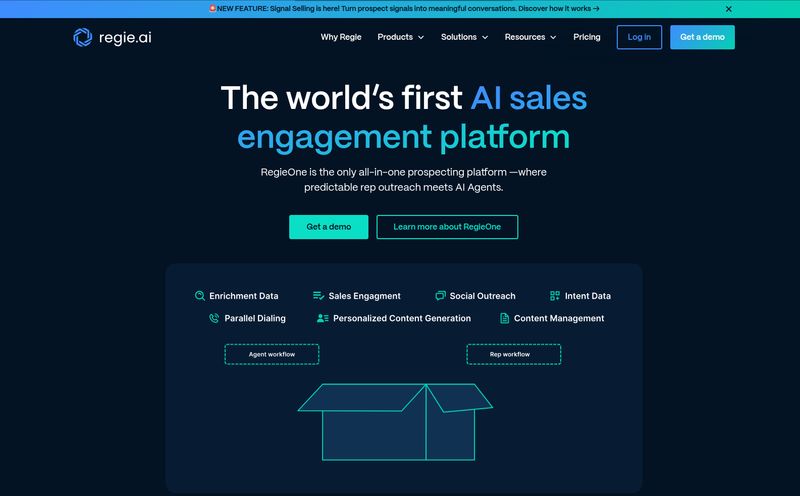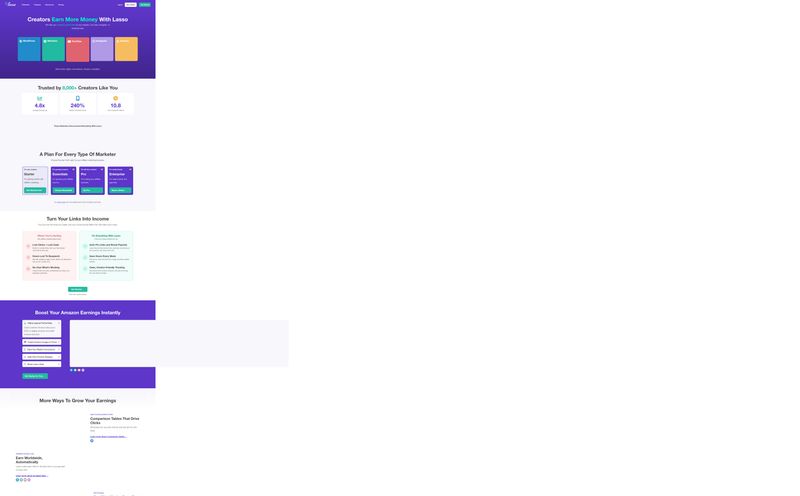If you're in customer success or sales, you've felt the pain. It’s 4 PM on a Tuesday, and you have a QBR with a major client tomorrow morning. What are you doing? You’re frantically digging through Salesforce, trying to piece together usage stats. You're pinging the product manager on Slack for the latest feature updates. And you’re Frankensteining a PowerPoint deck from three other presentations, hoping the branding is mostly right.
It’s a grind. We spend hours creating these supposedly "custom" presentations that, if we’re being brutally honest, are about 80% boilerplate. We know personalization is king, but who has the time to truly personalize at scale?
I’ve been in the SEO and traffic game for years, and one thing is constant: relevance wins. Whether it’s an ad, a blog post, or a sales pitch, if it doesn’t speak directly to the person on the other end, you've lost. So when I stumbled upon a tool called Korl, which claims to automate this exact kind of hyper-personalization for product communications, my curiosity was definitely piqued.
Is it just another AI hype train, or is it a genuine solution to a problem that plagues almost every B2B SaaS company? I decided to dig in.
So, What is Korl, Exactly?
At first glance, you might think Korl is just another AI slide generator. It’s not. That’s like calling a Tesla a golf cart because they both have wheels. The real power of Korl isn't just in creating slides; it's in where it gets its information from. It's an AI platform built to sync with all your important data sources—think your CRM (like Salesforce), your product roadmap tools (like Jira), and your customer success platforms.
It then acts like a super-intelligent assistant. It summarizes all this data and automatically generates tailored product presentations for specific situations. Need a deck for a quarterly business review? Done. A renewal conversation? It’ll whip one up. Trying to show a customer how they could benefit from an upgrade? Korl can build the pitch for you, using their actual data to back it up.
It’s less of a presentation tool and more of a communication engine, designed to turn your messy, scattered data into a clear, compelling story for each customer.
The Big Problem Korl Is Trying to Solve
Korl’s own homepage puts it perfectly: "Customers won't pay for what they can't see."
This is a truth that hits hard in the SaaS world. You could have the most amazing product on the planet, with features that could literally change a customer's business. But if they don’t know those features exist, or they don’t understand how those features apply to them, they might as well not exist. The value is invisible.

Visit Korl
This creates a massive value gap. It’s why customers churn, even when the product is good. It’s why upselling is so hard. We're so busy fighting fires that we forget to be proactive tour guides, showing customers the cool new wings of the museum we just built for them.
Manually closing this gap is a nightmare. It requires a level of coordination between product, sales, and customer success that... well, it rarely happens consistently. Korl’s entire reason for being is to automate that tour guide role, making sure every customer sees the value they’re getting and the potential value they’re missing out on.
How Korl Actually Works Its Magic
Okay, so how does it go from a pile of data to a polished presentation? It seems to be a three-step dance.
First, The Data Sync
This is the foundation of everything. Korl integrates with the tools you already use. It pulls product roadmap information, customer usage data, open support tickets, and account health scores into one place. This creates a complete, 360-degree view of the customer relationship and your product's evolution.
Second, The AI Brain
Once the data is synced, Korl’s AI gets to work. It doesn’t just dump the data onto a slide. It analyzes it. It looks for patterns. It identifies which upcoming features are most relevant to a specific customer based on their past behavior or stated goals. It generates not just the slides but the talking points too, giving the presenter a script built on real insights.
Third, Hyper-Personalization at Scale
This is the payoff. The final output isn't a generic deck with a new logo slapped on top. It’s a presentation that might say,
Hey Customer A, we saw you used Feature X 150 times last month. Our new Feature Y, which is launching next quarter, automates that process. Here's how it would work for you.
That's a world away from a generic product update email, isnt it?
Who Is This Really For?
Let's be clear, this probably isn't for the solo-preneur or the brand new startup still figuring out product-market fit. Based on its focus, Korl seems squarely aimed at established B2B tech companies with dedicated teams for:
- Customer Success Managers (CSMs): This is probably the biggest audience. Automating QBR and renewal prep is a game-changer, freeing them up to be more strategic advisors instead of data-entry clerks.
- Account Managers & Sales Teams: For expansion and upsell opportunities, being able to generate a data-backed pitch in minutes is incredibly powerful.
- Product Marketers: It helps bridge the gap between their work and the front lines, ensuring that the value props they develop are actually being communicated, and personalized for every key account.
My Honest Take: The Good, The Bad, and The "It Depends"
No tool is perfect. As someone who has seen a thousand "solutions" come and go, I'm naturally skeptical. Here's my breakdown of Korl based on what I've seen.
The Good Stuff
The time savings are the most obvious win. I've seen estimates that CSMs can spend 5-10 hours preparing for a single major QBR. If Korl can cut that by 80-90%, that's a massive return. But it's more than that. The ability to personalize at scale is the real holy grail. It can transform customer conversations from reactive check-ins to proactive, value-driven partnerships. And the fact that the content is always up-to-date, reflecting the latest product changes without manual intervention, solves a huge, nagging operational headache.
The Reality Check
Now for the other side of the coin. First, this is not a plug-and-play magic box. It requires integration. If your company's data hygiene is poor—if your Salesforce is a mess of duplicate contacts and your Jira tickets are vague—you're going to have a bad time. The classic "garbage in, garbage out" principle applies with force. The quality of Korl's output is directly tied to the quality of your input data.
Second, and this is important, you can't just blindly trust the AI. Not yet, anyway. The content it generates will, and should, require a human review. The AI can get you 90% of the way there, but a human needs to provide that last 10% of nuance, tone, and strategic oversight. Think of it as an incredibly skilled co-pilot, not as the autopilot. You're still the one flying the plane.
What's the Price Tag on This Magic?
Ah, the million-dollar question. Or, hopefully, a bit less than that. Like many B2B SaaS platforms targeting mid-market and enterprise clients, Korl doesn't list its pricing publicly on the site. I clicked around, even found a 404 page (oops, someone should fix that!), but no pricing page.
This is typical. It almost certainly means they use a custom pricing model based on factors like:
- The number of users (seats)
- The number of integrations you need
- The volume of presentations being generated
Your best bet is to use the "Schedule Demo" button on their site. This approach allows them to understand your needs and give you a tailored quote. It's a high-touch sales process for a high-value tool.
Korl vs. The Old Way
To put it in perspective, here's how Korl stacks up against doing things manually or using a generic AI tool.
| Method | Personalization | Time Cost | Data Accuracy |
|---|---|---|---|
| Manual (PowerPoint) | Low to Medium (High effort) | Very High | Prone to human error; often outdated |
| Generic AI Creator | Low (Just text generation) | Low | Not connected to live data |
| Korl AI | Very High (Automated) | Very Low | Synced with live data sources |
Frequently Asked Questions About Korl
- Is Korl a replacement for PowerPoint or Google Slides?
- Not really. It's a content generator. It creates the personalized story and slides for you, which you then present. It streamlines the creation process, which is the most time-consuming part. The final output might be used within Korl's platform or be exportable.
- What tools does Korl integrate with?
- While a definitive list isn't public, for a tool like this to work, it would have to connect with industry-standard platforms like Salesforce, HubSpot, Jira, Gainsight, and other CRMs and product management tools.
- How much effort is the initial setup?
- I'd expect a moderate amount of upfront work. You don't just flip a switch. You'll need to work with their team to connect your data sources correctly and perhaps configure some rules or templates to match your company's messaging and branding. A little work upfront for a lot of automation later.
- Can I trust the AI-generated content completely?
- No, and you shouldn't want to. Always plan for a final human review. The AI does the heavy lifting, but the CSM or Account Manager adds the final strategic polish and ensures the tone is perfect for their specific client relationship.
- Is Korl a good fit for a small startup?
- Probably not for a very early-stage one. Korl seems best for companies that have scaled to the point where they have dedicated customer-facing teams and a solid set of data to draw from. If you have at least a handful of CSMs or Account Managers, it's worth investigating.
Final Thoughts: A Worthy Co-Pilot?
So, back to the big question: Is Korl the end of the presentation grind? For the right companies, I think it's a huge step in that direction. It's not a silver bullet that will magically fix a broken customer success process or dirty data.
But it is a powerful force multiplier. It takes the most tedious, time-consuming part of customer communication—the data gathering and content creation—and puts it on autopilot. This frees up your smartest people to do what they do best: build relationships and think strategically.
In my opinion, the future of customer engagement isn't about more emails or more generic check-ins. It's about delivering targeted, undeniable proof of value in every single interaction. Tools like Korl are making that future possible, not tomorrow, but today. It's an investment in scaling not just your processes, but your relationships.



